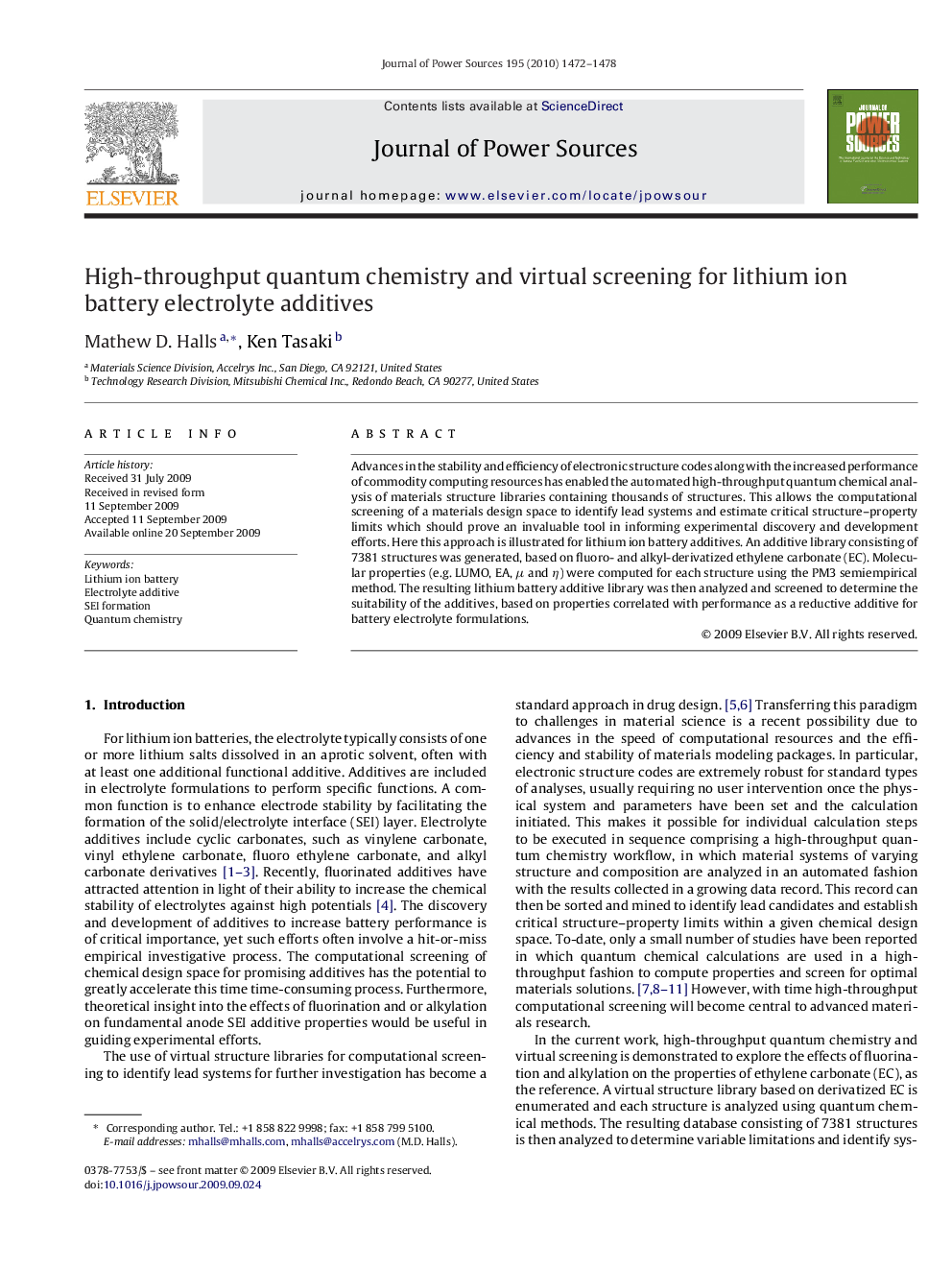| Article ID | Journal | Published Year | Pages | File Type |
|---|---|---|---|---|
| 1293829 | Journal of Power Sources | 2010 | 7 Pages |
Advances in the stability and efficiency of electronic structure codes along with the increased performance of commodity computing resources has enabled the automated high-throughput quantum chemical analysis of materials structure libraries containing thousands of structures. This allows the computational screening of a materials design space to identify lead systems and estimate critical structure–property limits which should prove an invaluable tool in informing experimental discovery and development efforts. Here this approach is illustrated for lithium ion battery additives. An additive library consisting of 7381 structures was generated, based on fluoro- and alkyl-derivatized ethylene carbonate (EC). Molecular properties (e.g. LUMO, EA, μ and η) were computed for each structure using the PM3 semiempirical method. The resulting lithium battery additive library was then analyzed and screened to determine the suitability of the additives, based on properties correlated with performance as a reductive additive for battery electrolyte formulations.
